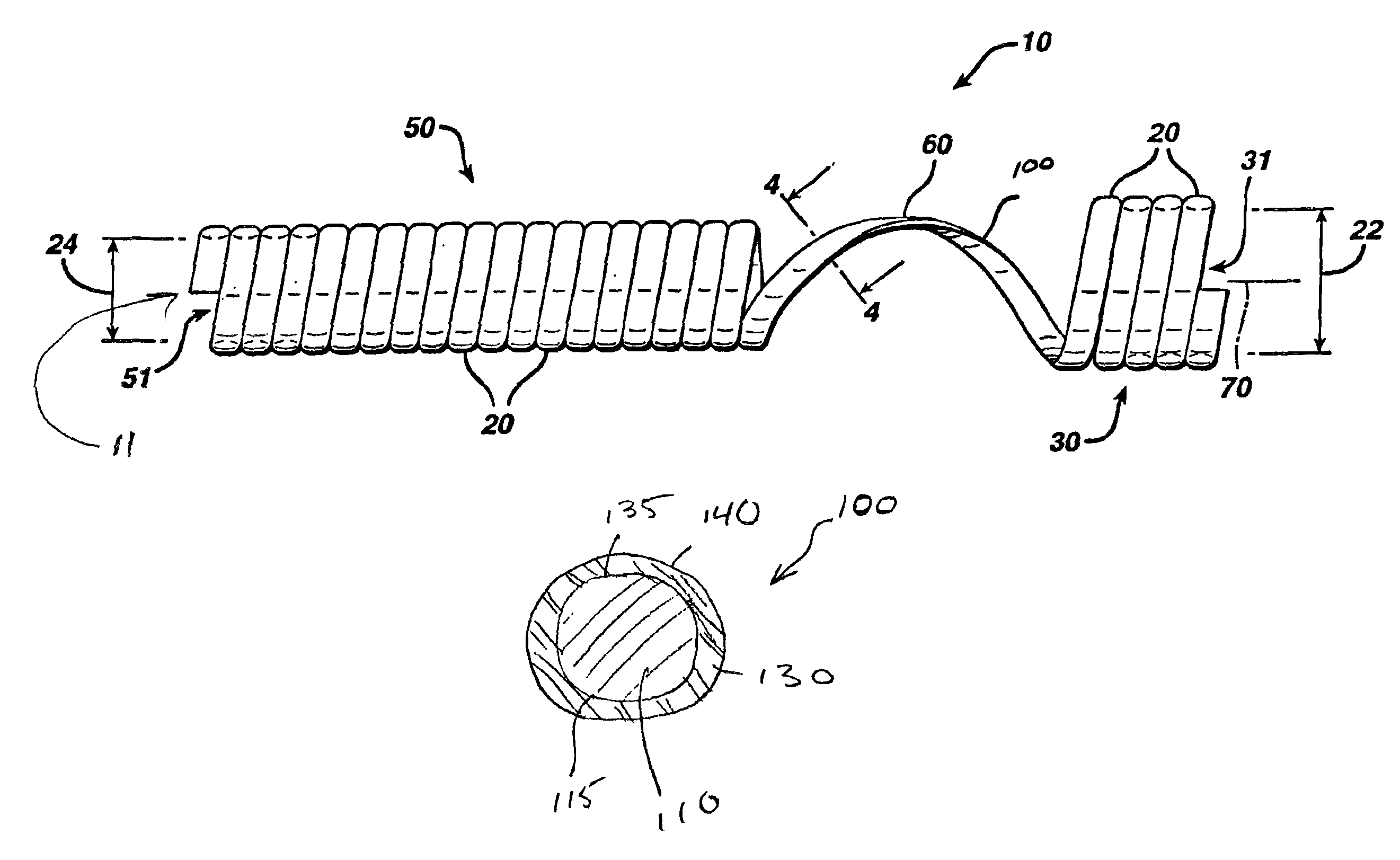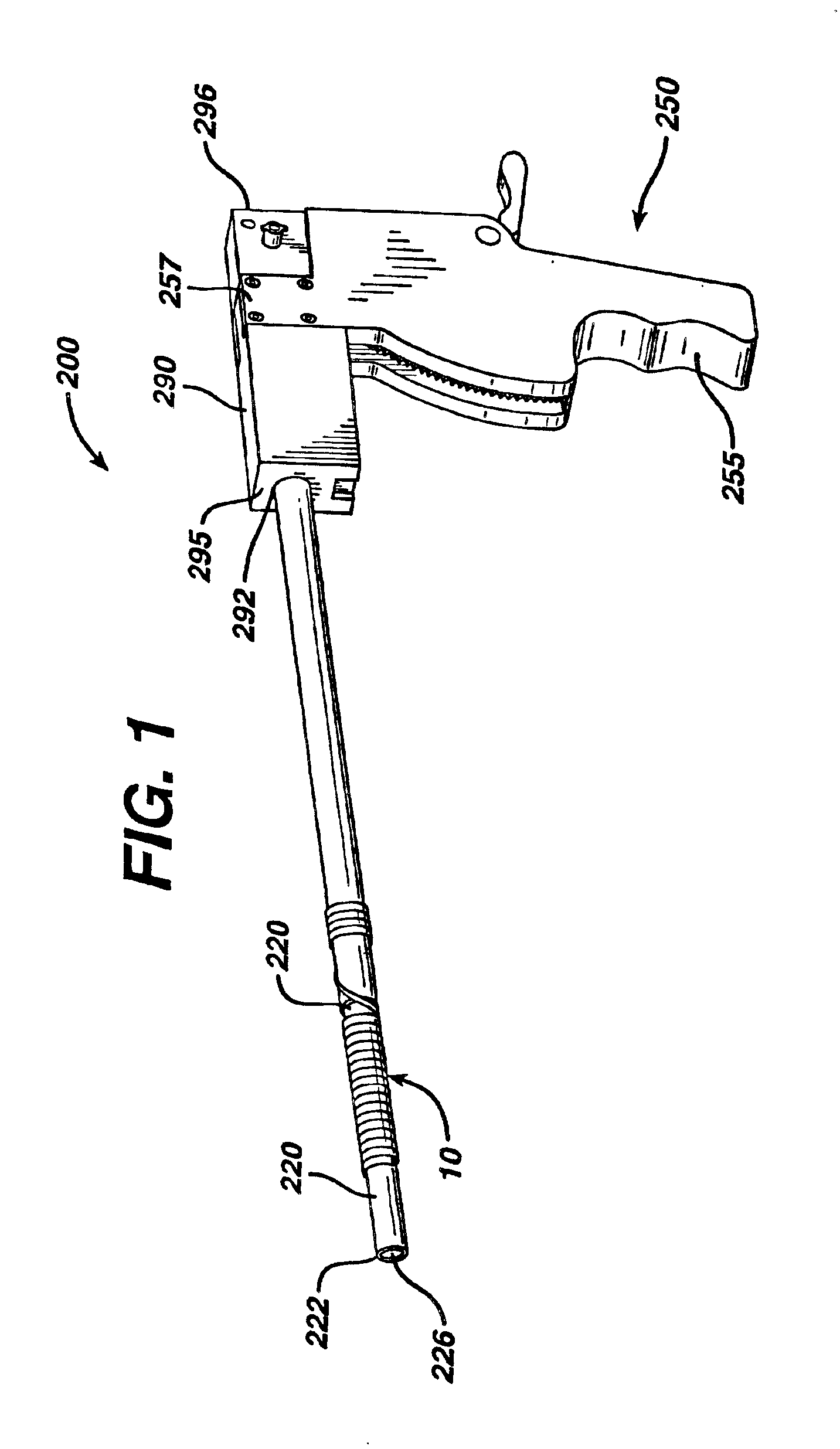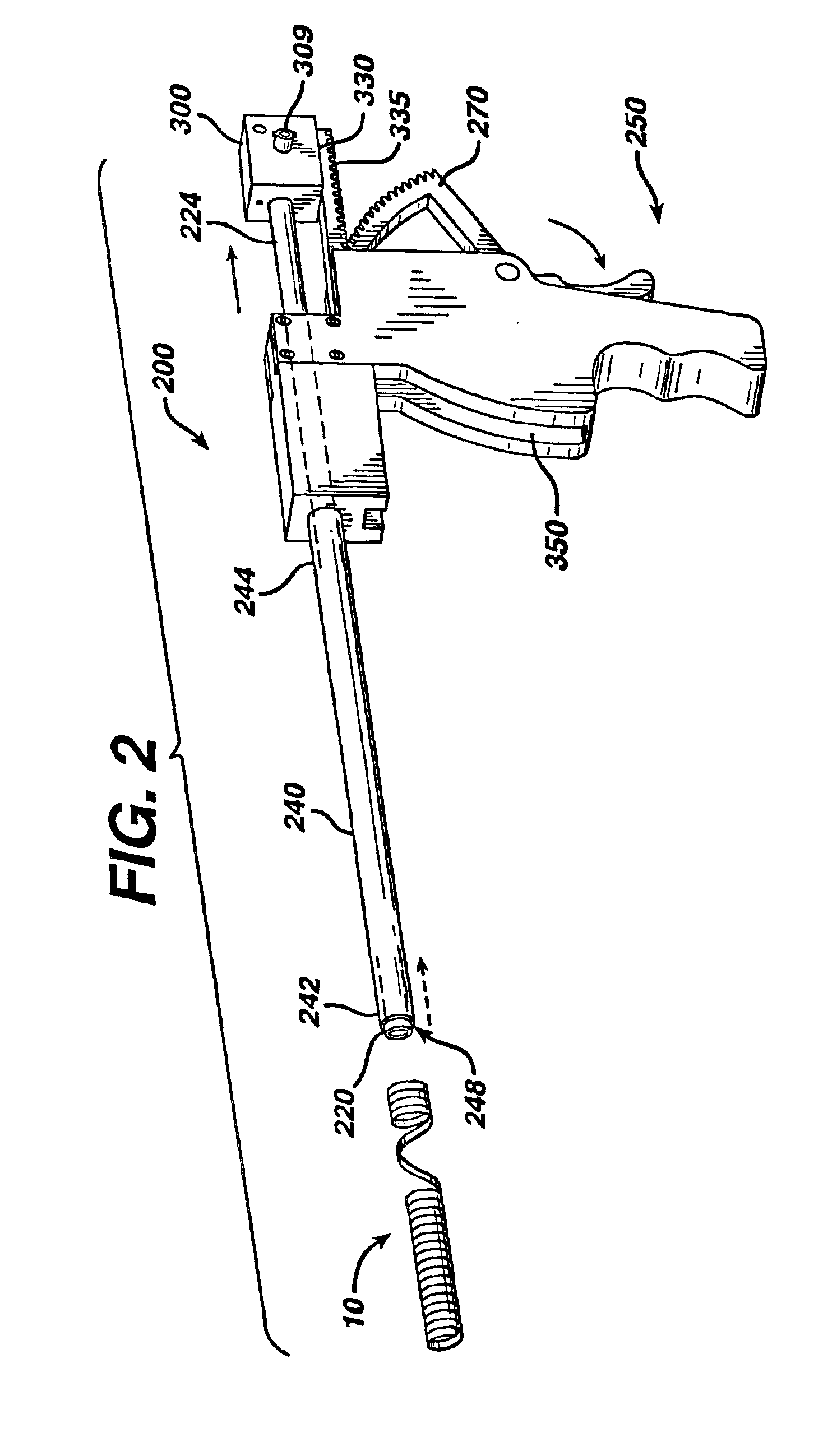Removable stent for body lumens
a stent and body technology, applied in the field of medical devices, can solve the problems of affecting the healing effect of the stent, and irritation of the surrounding tissues, and achieve the effect of convenient passing or removal
- Summary
- Abstract
- Description
- Claims
- Application Information
AI Technical Summary
Benefits of technology
Problems solved by technology
Method used
Image
Examples
example 1
[0045]Manufacture of Removable Fiber by Extrusion Coating Process.
[0046]A polydiaxanone (PDS) homopolymer was added to a nitrogen purged hopper of a ¾″ vertical single screw extruder with a 24:1 (Length:Diameter) standard screw. The temperature profile of the extruder was 250, 260, 270 and 275 degrees (F) from rear zone to die. The screw speed was 6.5 RPM and the adapt pressure was 1345 psi. A B&H 30 cross head (B&H Tool, Inc., San Marcos, Calif.) was employed with a 0.020-inch diameter guide (pressure tip) and a 0.048-inch diameter die. An 0.018-inch diameter non-degradabe polyester braided filament (sold under the tradename ETHIBOND, by Ethicon, Inc., Somerville, N.J.) was guided through the cross head. The fiber was coated with molten polydioxanone, chilled in a water trough, dried by a air wiper, taken off and sequentially spooled. The temperature of the water trough was 8° C. The take-off speed was 2.1 meter / min. The fiber, with the outer diameter of 0.044-inch, was stored in a...
example 2
[0047]Manufacture of Stent Using the Coated Filament
[0048]A string was tied so that it created a small loop through the first hole C of the mandrel (see FIG. 10). Two metal posts (mm diameter 2×15 mm length) were inserted into the holes A and B.
[0049]Posts were placed in holes A and B. The C-side end of the mandrel was clamped inside the collet of a winding motor. A 5-foot long coated filament was passed through the loop. The fiber was folded. The two free ends were held together and the folded fiber was stretched loosely so that the loop was positioned to be in the approximate center of the fiber. The folded filaments were loosely held together to make sure that the coils were packed adjacent to each other. The winding speed was between 20-30 RPM for the length of the Prostatic Section.
[0050]Once the first post (B) was reached, the fiber was then bent over the post toward the distal section. Winding an additional 180° more formed the connector between posts (A) and (B). The filamen...
example 3
[0052]A male patient is appropriately anesthetized and undergoes a prostrate thermal ablation procedure using conventional laser treatment devices. After successful completion of the surgical procedure, a stent 10 of the present invention is inserted into the patient's urethra and bladder in the following manner using an applicator 200. The surgeon trims the Prostatic Section of the stent to size. The stent is placed at the end of the applicator. A conventional cystoscopic telescope is inserted into the lumen of the applicator. The stent and applicator are lubricated with a water soluble medical grade lubricant. A fluid reservoir is attached to the applier as in any standard cystoscopy procedure. The stent is placed in the prostatic urethra under direct visualization using the applicator. Once positioned correctly, the applicator is removed, leaving behind the stent in the prostatic urethra. In approximately 28 days after implantation, the outer coating degrades, thereby converting ...
PUM
| Property | Measurement | Unit |
|---|---|---|
| glass transition temperature | aaaaa | aaaaa |
| glass transition temperature | aaaaa | aaaaa |
| length | aaaaa | aaaaa |
Abstract
Description
Claims
Application Information
 Login to View More
Login to View More - R&D
- Intellectual Property
- Life Sciences
- Materials
- Tech Scout
- Unparalleled Data Quality
- Higher Quality Content
- 60% Fewer Hallucinations
Browse by: Latest US Patents, China's latest patents, Technical Efficacy Thesaurus, Application Domain, Technology Topic, Popular Technical Reports.
© 2025 PatSnap. All rights reserved.Legal|Privacy policy|Modern Slavery Act Transparency Statement|Sitemap|About US| Contact US: help@patsnap.com



